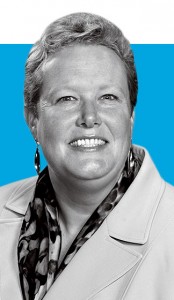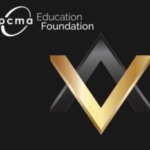Last summer, Janet Sperstad, CMP, program director for the meeting and event management degree program at Madison Area Technical College in Madison, Wisconsin, was asked to help the U.S. Department of Labor (DOL) review its “Hospitality and Tourism Competency Model,” which is the industry sector where DOL slots in meeting and event planners.

According to the DOL, industry models are created to provide “a clear description of what a person needs to know and be able to do — the knowledge, skills, and abilities — to perform well in a specific job, occupation, or industry.” Right off the bat, Sperstad saw serious flaws with how meeting professionals were categorized in the model, beginning with the fact that “events and exhibitions” were missing altogether. Meeting planners appeared as a “sub-sub group,” she said, lumped into a sector together with lodging managers, restaurateurs, and dishwashers, among others.
So Sperstad, along with Marsha Flanagan, vice president of learning experiences for the International Association of Exhibitions and Events (IAEE), whom Sperstad said she called in for reinforcement, launched an education campaign.
They supplied DOL officials with resources, including the Meeting and Business Event Competency Standards, the Certified Meeting Professional (CMP)–International Standards, and the Certified in Exhibition Management (CEM) blueprint, to document the body of knowledge required by event professionals.
They quickly made the point that meeting and event professionals belonged in their own sector, but it was tougher — even after repeated emails and calls — to convince DOL to address competency gaps in the model, including expertise in business strategy, marketing, and technology. “So we did what we all know to be the most powerful tool in our midst,” Sperstad said. “We called a face-to-face meeting.”
On March 6, Sperstad (Flanagan was grounded by a snowstorm) met with key DOL staff in Washington, D.C., to talk with them about the event industry’s scope and influence, and ways in which the model could better reflect the body of work that event and exhibition professionals do.
It turned out to be a red-letter day. For the first time ever, in guidelines that will become official later this year, “our profession is being recognized by the U.S. Department of Labor as a stand-alone business sector, distinct and separate from lodging and tourism sectors,” Sperstad said. Competencies in the “Meetings, Events, and Exhibition Management” sector, which covers five pages in the model, include strategic planning, knowledge of learning formats, event design, and other non-logistics-based skills.
It was a big win — but Sperstad already has her eye on another goal. The model is reviewed every four years, and Sperstad would like to see event and exhibition professionals categorized not within the hospitality industry, but where she thinks they more properly belong, in business and marketing.
“We need to keep pushing the conversation,” she said, “and the boundaries.”



